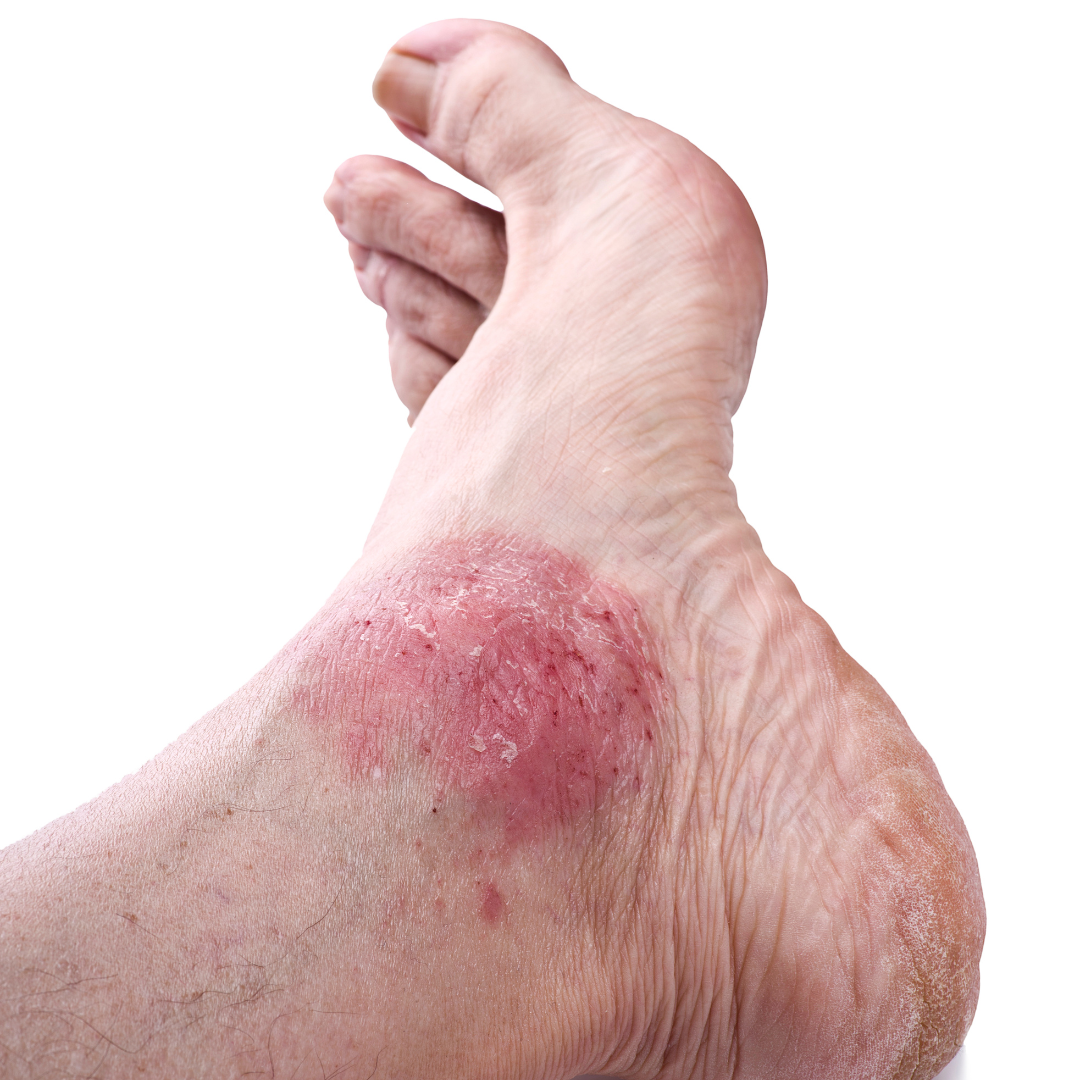
You have probably heard about a skin condition called psoriasis, but did you know that psoriasis can appear on your feet? This serious skin disease affects 7.5 million individuals in the United States, alone. Psoriasis is an autoimmune disease that causes white dead skin cells to accumulate on the skin. These appear as scaly, red patches that look like a rash.
Up to 20% of people living with psoriasis will also have psoriatic arthritis, a complication that is a painful and joint-damaging form of arthritis. Individuals with other autoimmune diseases can be more susceptible to psoriasis, and it can run in families, too. Many scenarios can trigger psoriasis, including emotional stress, illness, dry weather, recent sunburn or injury, and medications.
Signs You May Have Psoriasis
Most commonly, individuals will have plaque psoriasis with red, dry patches of skin that can appear anywhere, including the feet. The patches are often itchy and sore and can be covered in silvery scales.
Palmoplantar pustulosis, a less common form of psoriasis, usually appears on the feet and palm soles. With this condition, you may observe tiny, pus-filled blisters.
One note of caution: It is very easy to confuse psoriasis with athlete’s foot. Athlete’s foot is a common and contagious fungal infection often found between the toes or under the nails. Psoriasis can be sore and painful, while the athlete’s foot is primarily itchy.
Because it is so easy to confuse the two, it is best to visit your podiatrist’s office for a professional diagnosis and the right treatment plan.
Treating Your Feet
At this time, there is no cure for psoriasis. However, treatments are available to relieve symptoms and reduce the risk of a flare-up. Treatments include:
- Oral and injected prescription medications.
- Prescription topical oil, cream, or ointment.
- Light therapy in which the problem area is exposed to ultraviolet light in a hospital or clinic.
Some lifestyle changes can help reduce or prevent a psoriasis flare-up. Try maintaining a healthy weight and stopping smoking. Other changes that can help include exercising, reducing alcohol, keeping skin moisturized, using meditation or yoga to reduce stress, and keeping a symptom diary to pinpoint triggers.
Dr. Ryan L. D’Amico, Dr. Donal M. Erickson, Dr. Keith Sherman, Dr. Anne-Louise Smith, Dr. Justin Muser, Dr. Nicholas Cronin, and the rest of the staff at Syracuse Podiatry in East Syracuse, New York, can help treat and care for your feet. Call us at 315-446-3668 or make an appointment online to get help today.
